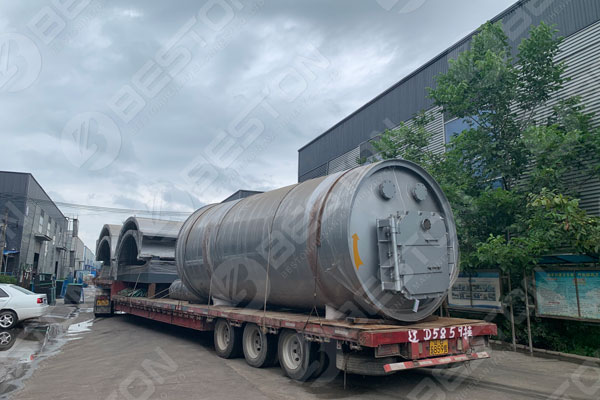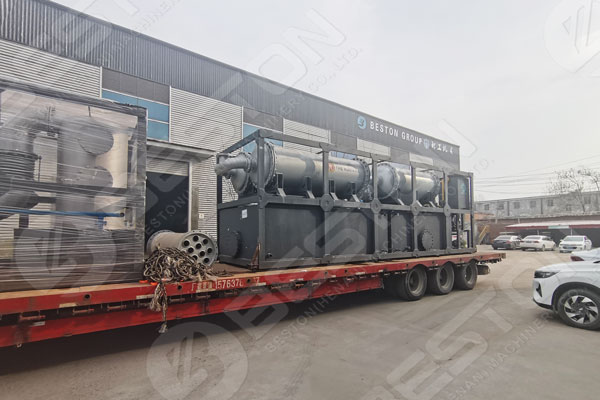Oil sludge pyrolysis is a process used to recycle oil and gas wastes. Oil sludge is loaded into a retort located in a pyrolysis module. The retort is insulated with ceramic fiber or refractory concrete to keep the internal temperature below the operating temperature of the pyrolysis unit. The high-temperature thermal insulation is installed in the retort to prevent a rise in operating temperature or the death of service personnel.

Beston Oil Sludge Pyrolysis Machine
Fast Pyrolysis
A continuous tire pyrolysis plant is designed to break down a large volume of oily liquid waste into water and energy. The process uses high temperature and nitrogen to burn the liquid waste. The resulting gas contains carbon, which is detrimental to the environment. The flue gas must be cooled before it can be released safely. It must then be filtered and undergo a number of processes, including de-dusting, washing, water spray, ceramic ring adsorption and activated carbon adsorption, before it can be discharged.
A fast pyrolysis plant for oil slag uses a hopper to feed the sample into the reactor. Then, it is conveyed into a fluidized bed reactor with an electrical heating element. The biochar produced during the process is deposited into char bins. The char is then cooled, and the weight of the biochar is recorded. The exhaust gas volume was measured using a diaphragm gas meter. This volume was subtracted from the inlet gas and the resultant amount was calculated. The process was further optimized using a face-centered central composite design (FCCD), a statistical technique for optimization.
The most common method of treating oily sludge is pyrolysis. Traditional methods of processing oily sludge include landfill, composting, and incineration. These methods can be very expensive and occupy large amounts of space. They also produce relatively small amounts of recyclable oil. The problem with this process is its high energy consumption and complicated operations. But in terms of effectiveness, pyrolysis is becoming an increasingly popular solution. This machine has many applications: https://bestonasia.com/oil-sludge-pyrolysis-plant/.
Intermediate Pyrolysis
The pyrolysis process is a simple one, consisting of a reactor, cyclone, and condenser. Nitrogen or other inert gases are used to maintain the oxygen-free environment. The oil sludge is fed into the reactor as small pre-dried solids. After the process is complete, the gases produced by the pyrolysis reaction are condensed to form bio-oil. The non-condensable gases are either collected for export or used as heat in the pyrolysis reactor.
The process is conducted at temperatures between 500 and 650 degrees Celsius. The heating rate is generally 30 to 300 degrees Celsius per minute. The process is more efficient when bio-oil is the desired product. Hydro-pyrolysis, on the other hand, produces mostly gas. The quality of the sludge is a determining factor in bio-oil production. The higher the oil content and volatile solids in the sludge, the higher its bio-oil content.

Beston Pyrolysis Plant Factory
The composition of the pyrolysis gas varies. The combustible gas fractions of the feedstocks range from 36 to 54% for SS, and from 62 to 72% for OF. The lower heating values of the gas components are equal to or less than 0.1 MJ m-3. The process can be repeated ad infinitum to achieve the desired conversion rate.
There are many kinds of pyrolysis machines in Beston Group Co., Ltd. Contact to know more details.